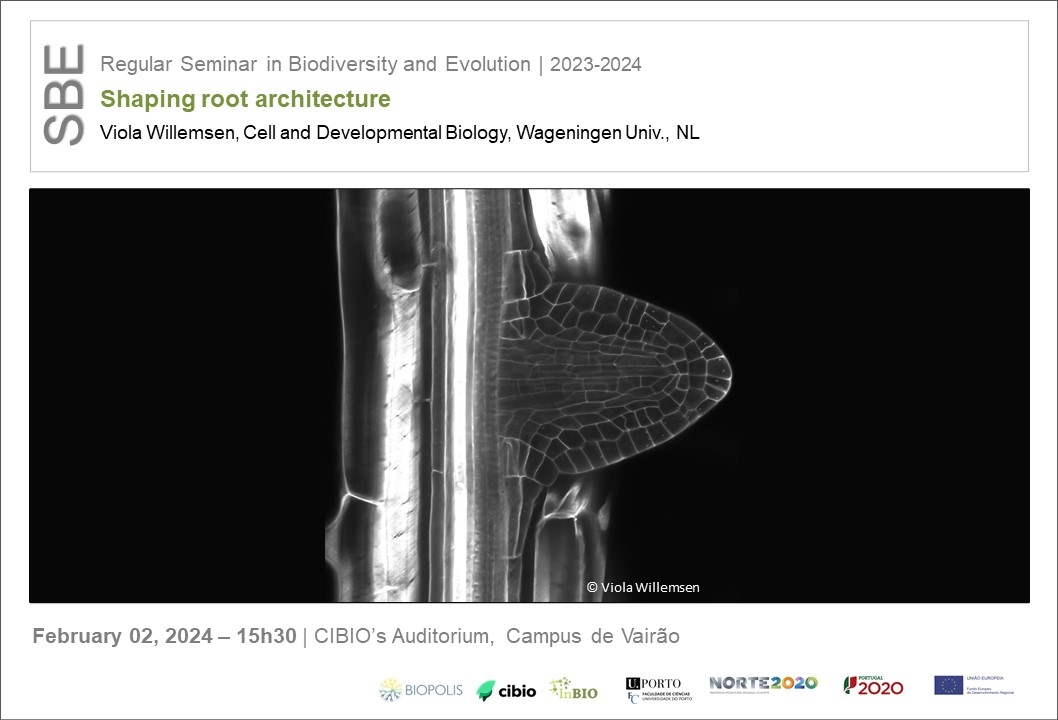Shaping root architecture
02 Feb 2024 - Viola Willemsen, Cell and Developmental Biology, Wageningen Univ., NL| 15h30 | CIBIO, Campus de Vairão

REGULAR SEMINAR IN BIODIVERSITY AND EVOLUTION
Plant shape, or architecture, is a primary determinant of productivity and yield. The shape of the above-ground part of the plant determines light interception and photosynthesis, whereas the below-ground root system determines the interaction with the soil, including the uptake of water and nutrients and anchoring. As plant cells are bound by a cell wall and cannot move, shape is an outcome of the reorientation of the cell division plane and subsequent cell growth. In the model plant Arabidopsis, distribution patterns of the plant growth regulator auxin have been linked with altered cell division planes during lateral root initiation and in primary roots. The importance of orienting cell planes also becomes apparent in asymmetric cell divisions associated with the Arabidopsis root stem cell niche that are sustained by the activity of PLETHORA (PLT) proteins. These members of the AP2 transcription factor family are the main regulators of primary root meristem maintenance and the position of the meristematic boundary, regeneration, lateral root formation, and have an intimate relationship with auxin. Studying the orientation of cell division planes in higher plants is difficult due to tissue complexity while mosses like Physcomitrium patens have a simpler tissue organization and core genes are highly conserved but lack the complexity. This makes Physcomitrium patens a valuable model organism for studying the basic mechanisms of oriented cell divisions. Furthermore, besides the known players, new pathways involved in root architecture will be identified using different approaches e.g., using microbiota as tools to identify new players involved in optimizing root system architecture. Taken together, these combined efforts will continue to elucidate the molecular mechanisms that drive the key processes in root architecture.
Viola Willemsen is chair of Cell and Developmental Biology at the Wageningen University. She was involved in setting the foundation for the root as a model system of plant development and in the identification of the root stem cell niche and auxin maxima involved in regulating the key transcription factors involved in this process. Her present interest is to understand the genetic networks underlying multicellular complexity in plant organ formation like embryo, root, lateral root and regeneration. This involves the orientation of cell division that is an important aspect of plant organ formation. Studying orientation of cell division in higher plants is challenging. Using the moss model system Physcomitrium Patens, that has a simpler tissue organization, allows tracking the oriented cell divisions.
[Host: Ana Campilho, Plant Biology - PLANTBIO]